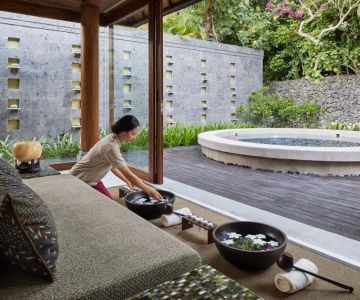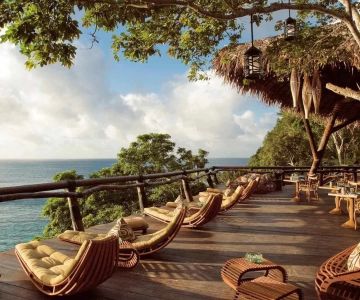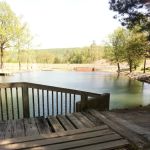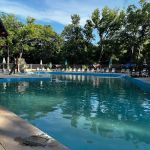
1. Define Your Vision and Certification Goals
Start with purpose. Are you hosting a 200-hour foundational training, a 300-hour advanced module, or a specialty track like prenatal or trauma-informed yoga? Clarifying scope shapes everything that follows—venue needs, staffing, pricing, and your student profile. When you map how to plan a yoga teacher training retreat in the USA, align your philosophy (lineage, ethics, inclusivity) with concrete outcomes (asana labs, sequencing skills, teaching practicums).
Outcome mapping: list competencies (e.g., breath mechanics, cueing for diverse bodies, safety and adjustments) and tie each to assessments—peer teaching circles, written reflections, anatomy quizzes, and final practicums.
2. Choose the Right USA Venue and Season
2.1 Regions and vibes
West Coast: coastal California and the Pacific Northwest offer nature immersion and farm-to-table cuisine—great for spring and fall. Mountain West: Colorado and Utah bring altitude, sunlight, and hiking add-ons (mind your participants’ acclimation). Northeast: New England retreats shine in late summer foliage seasons. Southeast: the Carolinas and Florida deliver year-round warmth and accessible airports.
2.2 Non-negotiables for venues
Quiet practice space with solid floors, natural light, and climate control; twin-share rooms with blackout curtains; outdoor areas for walking meditations; nutritious kitchen capable of vegetarian, vegan, and gluten-free menus; reliable Wi-Fi for digital coursework and backup weather plans.
2.3 Seasonality and travel ease
Pick dates that avoid major holidays and regional storm seasons. Confirm airport transfers and drive times. A good rule: if the journey to the venue stresses people out, it undermines the retreat before it starts.
3. Curriculum Design and Daily Rhythm
3.1 Sample daily arc (immersive 200-hour block)
06:30–08:00 Silent meditation, pranayama, gentle wake-up flow. 08:00–09:00 Breakfast. 09:15–12:15 Anatomy + alignment lab (skeletal variance, joint actions, prop strategies). 12:15–13:30 Lunch. 13:45–15:15 Philosophy & ethics (Yoga Sutra themes, accessibility, consent-based assists). 15:30–17:30 Teaching practicum with feedback. 17:45–18:30 Restoratives or yoga nidra. Evening Journaling, community circle, or guest speaker.
3.2 Assessment with compassion
Use rubric-based feedback so trainees know exactly how they’re evaluated (voice, pacing, language inclusivity, demo skills). Blend formative (ongoing) and summative (final) assessments to maintain momentum without pressure spikes.
3.3 Integration time
Plan white space—quiet hours, nature walks, or optional sauna/ice contrast—so learning lands in the body, not just the notebook. This is central to how to plan a yoga teacher training retreat in the USA that feels humane and sustainable.
4. Legalities, Budgeting, and Insurance
4.1 Entity, contracts, and waivers
Operate under an LLC or other structure, use clear participant agreements (cancellation windows, roommate policies, code of conduct), and collect medical disclosures respectfully. Require liability waivers and emergency contact info; align with venue policies.
4.2 Build a transparent budget
Line items: venue & meals (40–55%), staff pay (20–30%), marketing (5–10%), gear/props (3–7%), insurance & legal (2–5%), scholarships (variable), contingency (5%). Price in tiers (early bird, standard, last-minute) and offer payment plans; clarity builds trust and fills rooms.
4.3 Insurance must-haves
General liability + professional liability for lead teachers; event cancellation coverage if season/weather risks are material. Confirm venue’s additional insured requirements well before deposits are due.
5. Staffing, Roles, and Student Care
5.1 The core team
Lead teacher(s): curriculum + vision. Assistant faculty: anatomy specialist, sequencing mentor. Retreat manager: logistics, rooming, dietary notes. Wellness support: bodyworker or counselor on call for high-intensity weeks.
5.2 Accessibility and inclusion
Offer chair variations, prop-rich set-ups, and cueing that centers agency. Provide quiet dining tables, fragrance-light zones, and culturally sensitive language. A caring environment is part of pedagogy.
5.3 Food as pedagogy
Design menus that model balanced energy—complex carbs, plant protein, healthy fats, hydration stations—so trainees learn by feeling the difference in their bodies.
6. Marketing, Enrollment, and Storytelling
6.1 Speak to transformation
Share who this is for (career changers, teachers leveling up, wellness pros), what they’ll be capable of post-training, and how your approach is distinct (trauma-informed, alignment-based, flow-focused, or interdisciplinary).
6.2 Channels that convert
Short-form video class snippets, alumni testimonials, live Q&A sessions, and transparent syllabi. Offer a free mini-module or sample anatomy lesson to let prospects experience your teaching style.
6.3 Enrollment flow
Application → discovery call → deposit → welcome packet (packing list, reading list, schedule) → community forum access. Thoughtful pre-arrival touchpoints reduce anxiety and no-shows.
7. Real Retreat Stories from the Road
Desert clarity: In Arizona, a cohort hit a mid-training slump until a sunset silent hike reframed the learning—trainees returned to evening practicum with softer voices and sharper cues. Coastal resilience: A foggy Mendocino morning pushed the group indoors; the lead teacher pivoted to pranayama and philosophy—participants later called it the most unforgettable day. These lived moments are why people choose an immersive teacher training over a purely online path.
8. Work with Refined Travel for Seamless Planning
Venue scouting, contract negotiation, group transfers, and dietary logistics can overwhelm even seasoned teachers. Partner with Refined Travel to source USA venues aligned with your budget and vibe, coordinate seasonal timing, and organize add-ons like national park permits, sound baths, or chef-led nutrition workshops. If you’re mapping how to plan a yoga teacher training retreat in the USA and want it to feel effortless, professional travel design turns your vision into a grounded, beautiful reality.







 Mill Pond Village Mobile Home & R.V. Park4.0 (102 reviews)
Mill Pond Village Mobile Home & R.V. Park4.0 (102 reviews) Siesta Lago Manufactured Home Community3.0 (608 reviews)
Siesta Lago Manufactured Home Community3.0 (608 reviews) Inez Spring Riverfront RV Park4.0 (100 reviews)
Inez Spring Riverfront RV Park4.0 (100 reviews) Spring Valley Manufactured Home Community3.0 (64 reviews)
Spring Valley Manufactured Home Community3.0 (64 reviews) Camino Villa Mobile Home Park/RV Park4.0 (112 reviews)
Camino Villa Mobile Home Park/RV Park4.0 (112 reviews) Country View Mobile Home Community4.0 (16 reviews)
Country View Mobile Home Community4.0 (16 reviews) Exclusive Travel Packages for First-Class Travelers: A Guide to Luxury Vacations
Exclusive Travel Packages for First-Class Travelers: A Guide to Luxury Vacations Refined Travel Experiences in Southeast Asia: Explore Luxury & Unique Destinations
Refined Travel Experiences in Southeast Asia: Explore Luxury & Unique Destinations How to Make the Most of Luxury Vacation Deals: Expert Tips for Savvy Travelers
How to Make the Most of Luxury Vacation Deals: Expert Tips for Savvy Travelers How to Enjoy a Refined Travel Experience in the Mountains
How to Enjoy a Refined Travel Experience in the Mountains Refined Travel Itineraries for Art and Culture Lovers: Explore the World of Art and History
Refined Travel Itineraries for Art and Culture Lovers: Explore the World of Art and History Most Luxurious Destinations for Honeymooners: Top Spots for Romance and Luxury
Most Luxurious Destinations for Honeymooners: Top Spots for Romance and Luxury